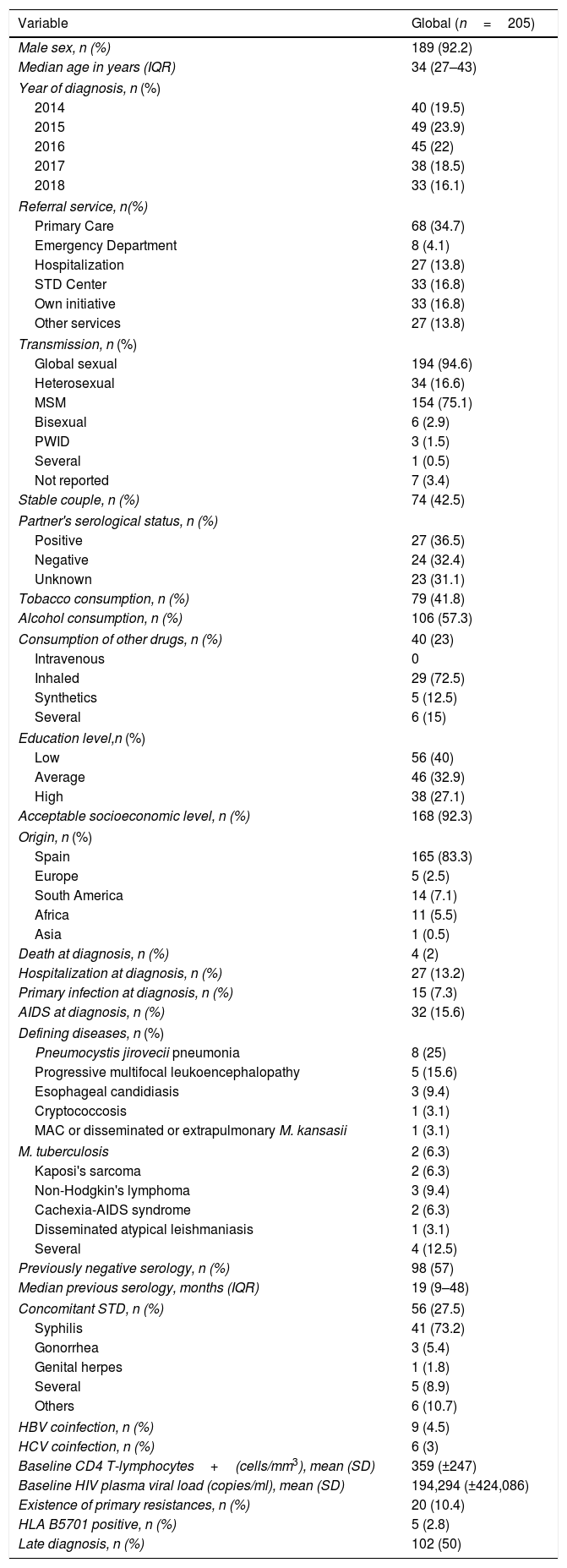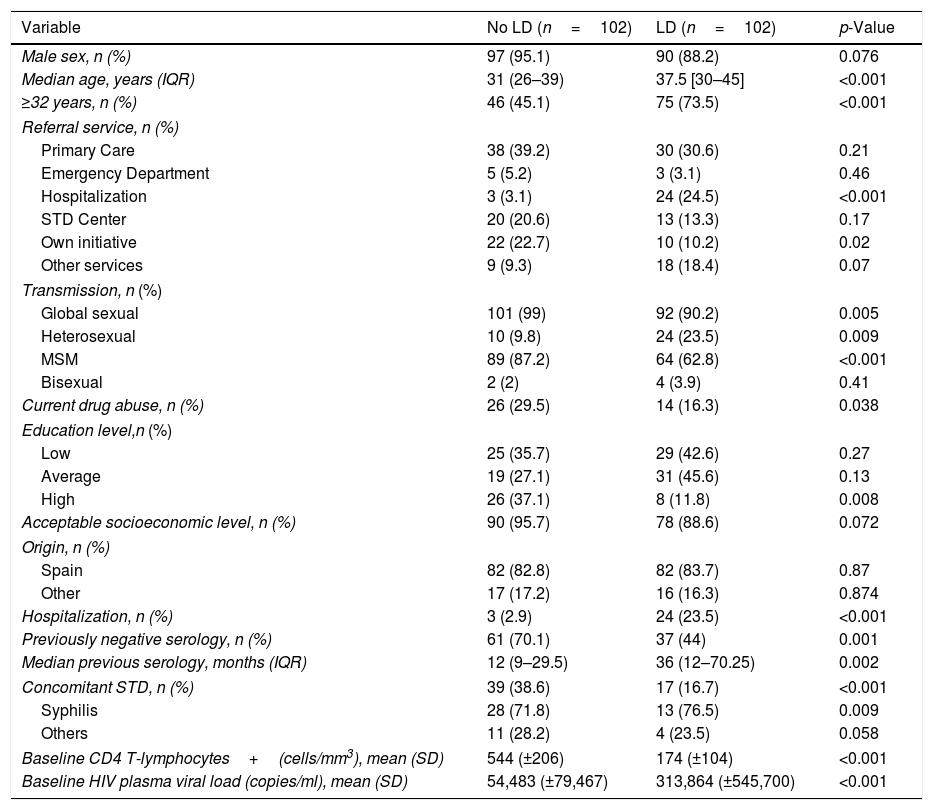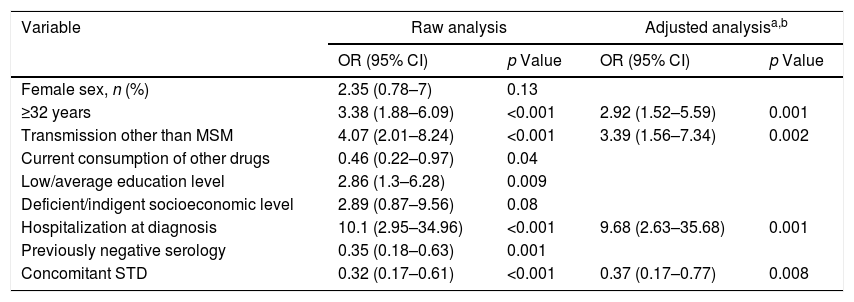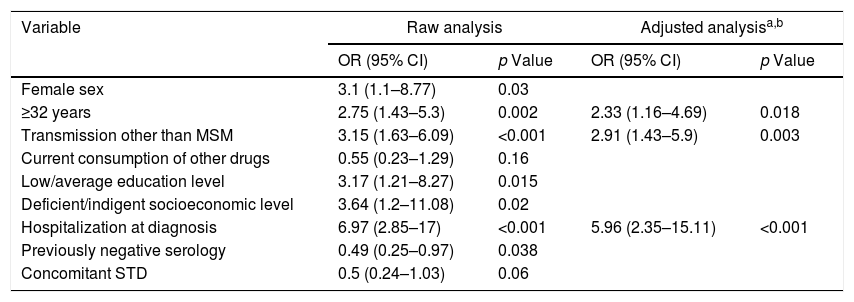Late diagnosis (LD) of HIV infection is associated with an increase in morbidity and mortality and transmissibility. The aim of this study was to define the clinical characteristics of new diagnoses and clarify the risk factors (RF) associated with LD with or without advanced disease (AD) between 2014 and 2018.
MethodsPatients with a new diagnosis of HIV infection treated in a specialized outpatient clinic of a third level hospital were included. LD with or without AD was defined as aCD4 count <350cells/mm3 or CD4 <200cells/mm3 respectively and/or the presence of any AIDS condition on diagnosis. An analysis was performed using binary logistic regression to analyze the RF associated with LD and the AD.
ResultsOf the 205 new diagnoses, 102 (50%) were LD. Age ≥32 years [(OR, 95% CI); 2.92 (1.52–5.59)], transmission different than in men who have sex with men [3.39 (1.56–7.34)] and hospitalization on diagnosis [9.68 (2.63–35.68)] were RF associated with LD. On the other hand, having a concomitant sexually transmitted disease (STD) [.37 (.17–.77)] was associated with an early diagnosis. The results were similar when analysing the LD with AD except for the STD.
ConclusionKnowledge of the clinical and epidemiological characteristics of new diagnoses of HIV infection and of the RF for LD with or without AD provides an opportunity for early diagnosis and to reduce transmissibility.
El diagnóstico tardío (DT) de la infección por el VIH se asocia con un aumento de su morbimortalidad y su transmisibilidad. El objetivo de este estudio fue definir las características clínicas de los nuevos diagnósticos y clarificar los factores de riesgo (FR) asociados al DT con o sin enfermedad avanzada (EA) entre el año 2014 y 2018.
MétodosSe incluyeron a los pacientes con nuevo diagnóstico de infección por el VIH atendidos en una consulta especializada de un hospital de tercer nivel. El DT con o sin EA se definió como el recuento de CD4 < 350 cel/mm3 o CD4 < 200 cel/mm3 respectivamente y/o condición definitoria de sida al diagnóstico. Se realizó un análisis mediante regresión logística binaria para analizar los FR asociados al DT y a la EA.
ResultadosDe los 205 nuevos diagnósticos, 102 (50%) fueron DT. La edad ≥32 años [(OR, IC95%); 2,92 (1,52-5,59)], la transmisión distinta a la de hombres que tienen sexo con hombres [3,39 (1,56-7,34)] y la hospitalización en el diagnóstico [9,68 (2,63-35,68)] fueron FR asociados al DT. Por otro lado, tener una enfermedad de transmisión sexual (ETS) concomitante [0,37 (0,17-0,77)] se asoció con un diagnóstico precoz. Los resultados fueron similares al analizar el DT con EA excepto para la ETS.
ConclusiónEl conocimiento de las características clínicas y epidemiológicas de los nuevos diagnósticos de infección por el VIH y de los FR para el DT con o sin EA constituyen una oportunidad para el diagnóstico precoz y para disminuir la transmisibilidad.










